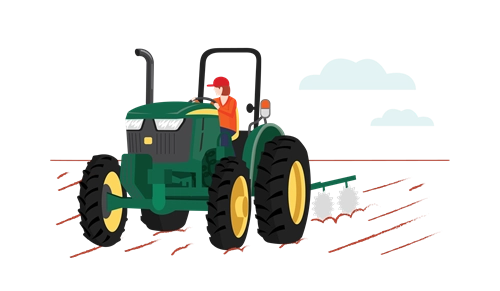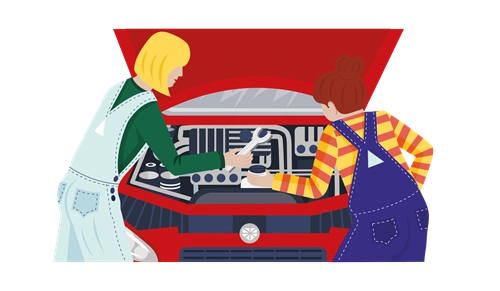-
Curriculum alignment
Science
AC9S10H02 – investigate how advances in technologies enable advances in science, and how science has contributed to developments in technologies and engineering
AC9S10H03 – analyse the key factors that contribute to science knowledge and practices being adopted more broadly by society
AC9S10H04 – examine how the values and needs of society influence the focus of scientific research
AC9S10I03 – select and use equipment to generate and record data with precision to obtain useful sample sizes and replicable data, using digital tools as appropriate
AC9S10I04 – select and construct appropriate representations, including tables, graphs, descriptive statistics, models and mathematical relationships, to organise and process data and information
AC9S8I08 – write and create texts to communicate ideas, findings and arguments for specific purposes and audiences, including selection of appropriate language and text features, using digital tools as appropriate
Design and Technologies
AC9TDE10K01– analyse how people in design and technologies occupations consider ethical and sustainability factors to design and produce products, services and environments
AC9TDE10K02 – analyse the impact of innovation and the development of technologies on designed solutions for global preferred futures
AC9TDE10P01 – analyse needs or opportunities for designing; develop design briefs; and investigate, analyse and select materials, systems, components, tools and equipment to create designed solutions
AC9TDE10P02 – apply innovation and enterprise skills to generate, test, iterate and communicate design ideas, processes and solutions, including using digital tools
- S
- T
- E
- M
Future transport – air taxis
Years 9 and 10
Learning hook
Are electric vertical take-off and landing aircraft (eVTOLs, say ‘ee-vee-tols’) coming to a city near you? They are a key part of visions for an advanced air mobility (AAM) future.
Share this 2023 article from Cosmos magazine with students, then have students work in pairs to complete a Plus-Minus-Interesting response to explore the concept of eVTOLs in Australian cities. Have students share with another pair, then report back in a class discussion.
Learning input
As a class, watch this video from McKinsey & Company. Have students complete a three-circle Venn diagram to compare eVTOLs, helicopters and small fixed-wing planes.
Girls in focus
As students research, they may notice that women are often represented as consumers of eVTOL technology rather than as aviation professionals. This vodcast series features women from across aviation and aerospace describing their careers and current roles.

But wait, there’s more! There’s also a drive-and-fly eVTOL, ASKA, cofounded by female entrepreneur Maki Kaplinsky.
Have students research the different eVTOL models currently on the market or being flight tested and create a class list. Allocate models to pairs of students to research.
Each pair then prepares a poster advertising the key features of the eVTOL. They should focus on:
- flight mechanics
- pilot vs autonomous
- range
- speed
- number of passengers
- luggage storage.
Conduct a gallery walk and have students consider which model they think would be best suited to their locality.
Students should consider the following:
- What are the transport needs or pressures that are currently unmet in their community? For example, is there freeway congestion from people commuting into city centres? Or is there difficulty accessing central services from remote locations?
- How easy will it be to develop landing ports at each end of the trip?
- What other sustainable transport modes can be linked to eVTOL locally and where is that infrastructure located?
Learning construction
Part A: Community perception
Challenge students to find out about local community attitudes to eVTOLs. They can survey community members about their willingness to adopt AAM and any concerns they might have.
Students can review this 2021 survey from McKinsey & Company to help them come up with useful questions. Each student collects five responses to the survey. As a class they can collate and represent the survey findings.
Part B: eVTOL proposal
Explain that students will work in small groups as the civil engineering team at a promising AAM startup. Their task is to select an eVTOL to invest in and design a pitch to gain the support of local government.
Each group should select a name for their startup – ideally one that will appeal to investors.
Have students revisit the video about AAM futures and consider all the engineer roles involved in developing eVTOLs and AAM infrastructure. They might consider adopting a specific engineering role as the group develop their pitch.
Girls in focus
Introducing girls to engineering careers and role models can support their STEM aspirations. Share this profile of Afrida, a civil engineer at Aurecon, to give students an insight into career pathways and a typical day in the life of a civil engineer. Alternatively, search STEM Women for a civil engineer interested in outreach work and set up a virtual or in-person talk for your students.
The key challenge for each group is to identify the practical and social issues their company will need to anticipate and solve in order to secure the support of local government. As the civil engineering team, they should focus on the infrastructure needed to support an AAM future in their city or town.
Key considerations as students construct their pitch include:
- practical requirements, for example, take-off zones, safety and risk mitigation, servicing, battery recharging infrastructure, peak flight needs vs peak parking needs
- perception issues such as safety, noise levels and urban aesthetics; students should also return to the responses from their community survey to identify any stakeholder concerns that might influence their pitch
- scale requirements, for example, how the approach will cater for increased AAM traffic over time.
Each pitch should include a supporting presentation that shows:
- a diagram of the proposed eVTOL showing key features
- a map of passenger pick-up and drop-off points, considering proximity to existing transport options and where the greatest need for the service might be
- a map of eVTOL flight paths
- a sketch of landing ports at different locations, showing key features
- proposed locations for eVTOL storage and maintenance when not in use
- a plan to scale up to manage future AAM traffic.
- If the school has access to drones, students may like to create illustrative models and videos to accompany their pitch.
- Students perform their pitch to an audience of their peers. You could also consider inviting community members.
-
Rubric
Assessment
Criteria
Beginning
Achieved
Exceeded
eVTOL selection and key features
Identifies key eVTOL features.
Identifies key eVTOL features and links these to community concerns.
Identifies key eVTOL features and explains how these address community concerns and add value to the community.
Route map
Provides a route map with at least two stops.
Provides a route map that connects to other public transport and meets community transport needs.
Provides a route map that augments other public transport, meets current community transport needs and creates future opportunities.
Landing port design
Landing port design considers passenger needs.
Landing port design considers passenger needs, technical requirements and aesthetics.
Landing port design complements the location and considers passenger, technical and public needs.
Storage locations
Identifies storage locations.
Identifies storage locations with a view to sustainability and public acceptance.
Identifies storage locations with a view to current and future sustainability and public acceptance.
Future planning
Outlines key features of eVTOL company growth.
Identifies opportunities for future development that benefit the community.
Identifies opportunities for sustainable growth and development that open up new opportunities for the community.
Communication
Pitch demonstrates some audience awareness, including selection of some appropriate content, language and text features.
Pitch demonstrates clear purpose and audience awareness, including appropriate use of content, language and text features.
Pitch is effective and persuasive, including purposeful and considered selection of content, language and text features.










